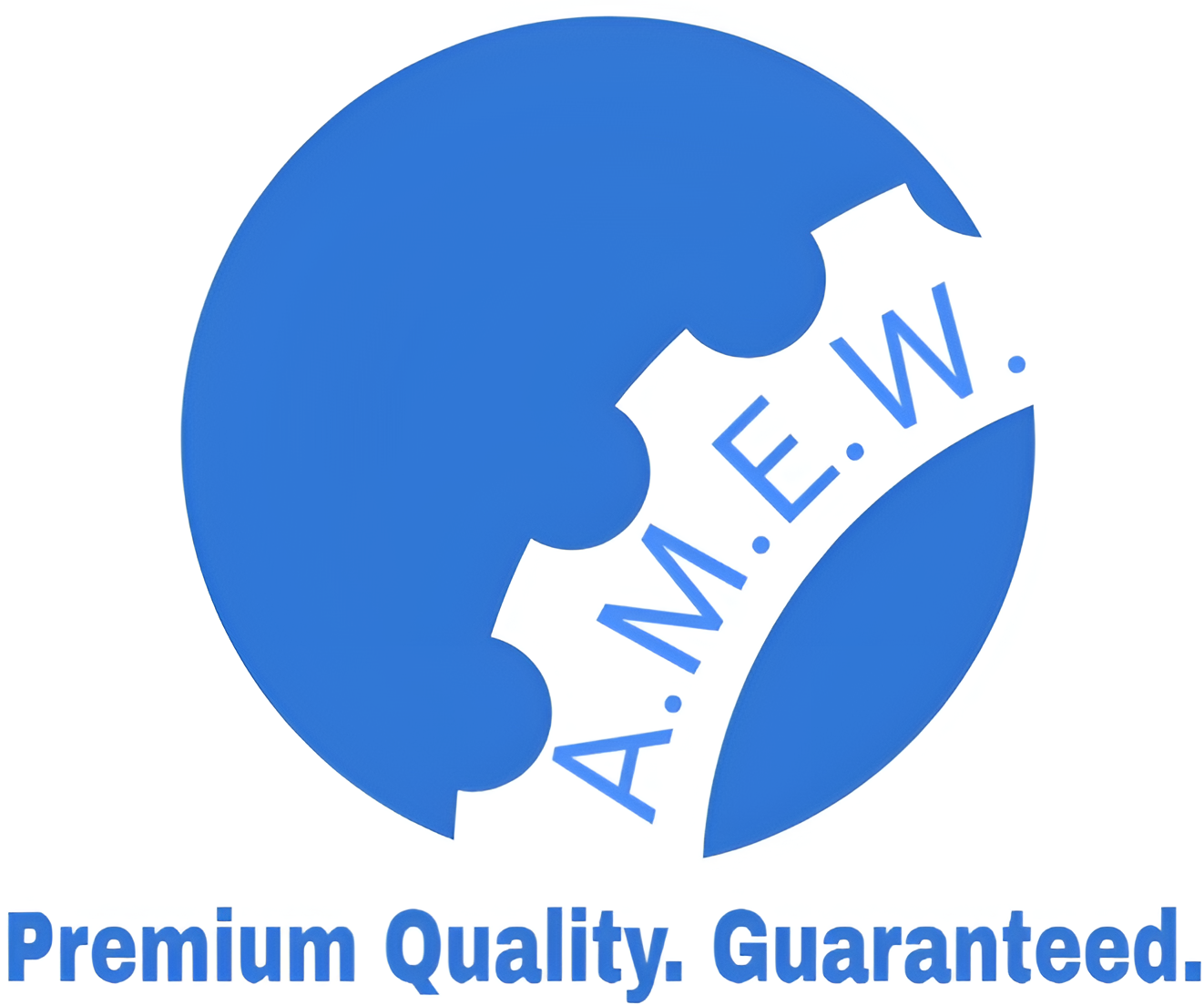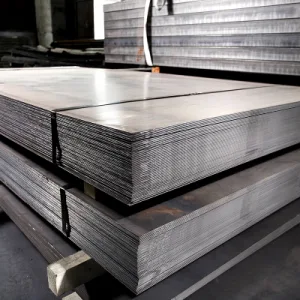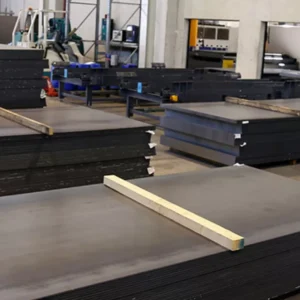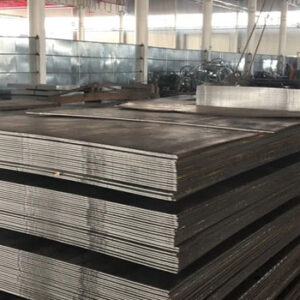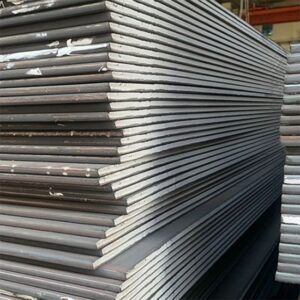Description
S355JR Structural Steel & Steel Plate
Table of Contents
- Introduction to S355JR Structural Steel
- Chemical Composition of S355JR Steel
- Mechanical Properties of S355JR Steel
- Yield Strength
- Tensile Strength
- Elongation
- Impact Resistance (JR designation)
- Manufacturing and Processing of S355JR Steel Plates
- Hot Rolling Process
- Heat Treatment
- Standards and Compliance for S355JR Steel
- EN 10025-2 Standard
- International Standards and Equivalents
- S355JR Steel Plate Grades
- S355JR vs. S355J0 vs. S355J2 vs. S355K2
- Applications of S355JR Structural Steel
- Building and Construction
- Infrastructure (Bridges, Railways)
- Mechanical Engineering and General Construction
- Offshore Projects
- Weldability and Formability of S355JR
- Comparison with Other Structural Steel Grades
- S355JR vs. S275JR
- S355JR vs. S355J0
- S355JR vs. S355NL
- Conclusion: Why Choose S355JR for Your Project?
1. Introduction to S355JR Structural Steel
S355JR is a versatile low-carbon steel grade used extensively in structural engineering applications. It is part of the European standard EN 10025-2, which specifies non-alloy structural steels for general applications. The “S” in S355JR stands for “structural,” while 355 refers to the minimum yield strength of 355 MPa. The “JR” designation indicates that the steel has passed an impact test at 20°C, ensuring good toughness at room temperature.
S355JR is highly valued for its excellent combination of strength, durability, and affordability. It is commonly used in structural applications such as buildings, bridges, and general construction projects.
2. Chemical Composition of S355JR Steel
The chemical composition of S355JR steel provides its strength and durability, while maintaining good weldability and formability. Key components include:
- Carbon (C): Max 0.24%
- Manganese (Mn): Max 1.60%
- Phosphorus (P): Max 0.045%
- Sulfur (S): Max 0.045%
- Silicon (Si): Max 0.55%
S355JR steel also contains trace amounts of copper, nitrogen, and other elements to improve corrosion resistance and mechanical properties.
3. Mechanical Properties of S355JR Steel
S355JR is known for its well-balanced mechanical properties, which include high strength, moderate ductility, and good toughness. These properties make it suitable for a wide range of structural applications.
3.1 Yield Strength
- Minimum Yield Strength: 355 MPa S355JR has a high minimum yield strength, which ensures that it can bear significant loads without deforming, making it ideal for load-bearing applications.
3.2 Tensile Strength
- Tensile Strength: 470-630 MPa The tensile strength of S355JR indicates the maximum stress it can withstand before breaking, providing a reliable performance in structural applications that require high durability.
3.3 Elongation
- Elongation at Break: 20% (for a thickness of ≤ 16mm) The steel’s elongation before breaking ensures that it retains a good degree of flexibility, which is important for absorbing stress without cracking or failing.
3.4 Impact Resistance (JR Designation)
The “JR” designation means that S355JR has been impact tested at 20°C with a minimum energy of 27 Joules. This guarantees that the steel can perform well at room temperature and resist fractures from impact.
4. Manufacturing and Processing of S355JR Steel Plates
4.1 Hot Rolling Process
S355JR is typically produced through the hot rolling process, where the steel is heated above its recrystallization temperature and rolled into plates. This process creates uniform thickness and improves the steel’s mechanical properties.
4.2 Heat Treatment
S355JR is often used in its as-rolled condition, but heat treatments such as normalizing or annealing can be applied to improve its ductility and toughness for specific applications.
5. Standards and Compliance for S355JR Steel
S355JR complies with the EN 10025-2 standard, which sets the technical delivery conditions for non-alloy structural steels. This ensures that S355JR meets stringent requirements for chemical composition, mechanical properties, and impact testing.
5.1 International Standards and Equivalents
S355JR is equivalent to several international steel grades, allowing it to be used in projects worldwide. Equivalent standards include:
- ASTM A572 Grade 50: U.S. specification for high-strength low-alloy structural steel.
- DIN 17100 ST52-3: German equivalent.
- SS490: Japanese structural steel grade.
6. S355JR Steel Plate Grades
S355JR is part of the S355 family of structural steels, which includes other grades with varying impact resistance and toughness levels.
6.1 S355J0
- Impact tested at 0°C.
- Suitable for applications in slightly colder environments.
6.2 S355J2
- Impact tested at -20°C.
- Used for applications in cold climates.
6.3 S355K2
- Impact tested at -20°C with a higher toughness requirement.
- Ideal for demanding applications where extra toughness is required.
6.4 S355NL
- Impact tested at -50°C.
- Offers improved toughness for extremely cold environments and offshore structures.
7. Applications of S355JR Structural Steel
S355JR’s combination of strength, durability, and affordability makes it suitable for a variety of structural applications.
7.1 Building and Construction
S355JR is frequently used in the construction of residential, commercial, and industrial buildings. Its high yield strength makes it ideal for load-bearing structures such as beams, columns, and frames.
7.2 Infrastructure (Bridges, Railways)
S355JR is widely used in infrastructure projects, including bridges and railways, where strength, reliability, and impact resistance are crucial for handling dynamic loads and environmental conditions.
7.3 Mechanical Engineering and General Construction
The steel is commonly used in mechanical engineering for the production of machine parts, equipment, and components where strength and durability are important.
7.4 Offshore Projects
S355JR is also used in offshore structures such as platforms and wind towers, thanks to its good toughness and resistance to dynamic forces in harsh marine environments.
8. Weldability and Formability of S355JR
S355JR offers excellent weldability due to its low carbon content, making it easy to weld using standard techniques like arc welding, gas welding, and resistance welding. This is particularly beneficial for large structural projects where on-site fabrication is required.
In terms of formability, S355JR can be bent, shaped, and rolled into complex forms without losing its mechanical properties, allowing for versatility in design and manufacturing processes.
9. Comparison with Other Structural Steel Grades
9.1 S355JR vs. S275JR
- S355JR has a higher minimum yield strength (355 MPa) compared to S275JR (275 MPa), making it more suitable for applications requiring higher strength.
- S275JR is more cost-effective but is generally used in lighter load-bearing applications.
9.2 S355JR vs. S355J0
- S355JR is impact tested at 20°C, while S355J0 is tested at 0°C, making S355J0 more suitable for colder environments.
- Both have similar strength, but S355J0 offers better toughness in lower temperatures.
9.3 S355JR vs. S355NL
- S355NL is designed for low-temperature environments and is impact tested at -50°C, whereas S355JR is tested at 20°C.
- S355NL offers superior toughness and is used in extreme environments like offshore structures.

